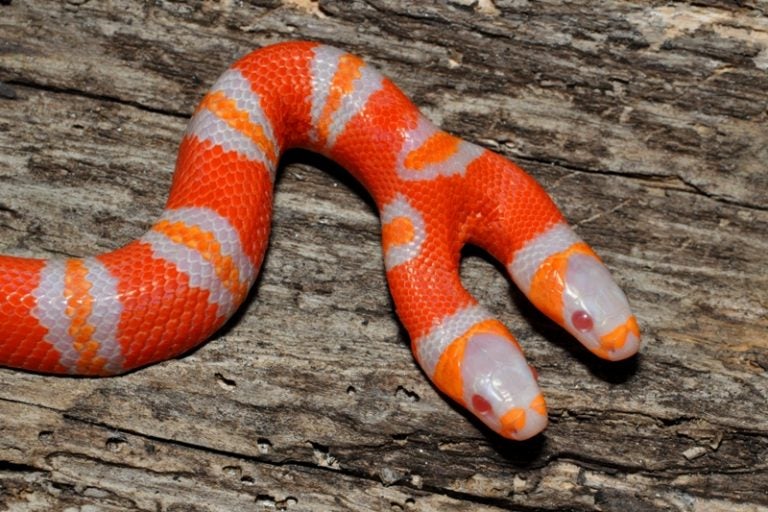You might have heard that a two-headed snake emerged from its shell recently at Sunshine Serpents—and you might have just read that it ate its first meal just in time for Thanksgiving.
There is more to the story of the snake—and more to the story than the snake.
While watching his albino Honduras Milk Snakes emerge from their eggs a few weeks ago, wildlife enthusiast Daniel Parker had to do a double-take when he saw a double-headed snake. “I couldn’t believe what I was looking at, “ he says. The fact that the snake was both albino and two-headed was especially surprising.
A small storm of news surrounded his organization, which works with UCF—Sunshine Serpents—and the snake became a sensation. Naturally, we wonder how rare this kind of thing is and so we go for the figures: 1 in 10,000 snakes emerge from the egg with two heads. That’s pretty rare—and here’s another fact: Parker’s snake is surviving, unlike other snakes.
See, the snake lives with two minds and mouths and only one body—and each head has a different idea of where that body should be going and what it should be doing. This is one reason these snakes usually don’t survive in the wild or even in captivity. But Parker’s is alive and well.
You can’t help but wonder which head ate the Thanksgiving meal. Will they take turns for future meals?
But once we get beyond the sensationalism of the snake itself, who is Daniel Parker and what exactly does his organization do?
Beyond Sensationalism
First, I discovered that Sunshine Serpents is about more than serpents. While Parker does focus on reptiles, he is more widely interested in Central Florida’s wildlife as a whole.
“Florida is my home,” he says,” I’m very attached to it and I’m also passionate about preserving it and helping others understand the region’s wildlife.”
In short, Parker isn’t just looking for the cool factor involved in breeding pretty snakes for pets or about the sensationalism and attention created by the recent phenomenon—he supports education and works directly with UCF on how to promote and preserve our region’s natural habitat and creatures.
Working directly with UCF’s biology department, the organization is also working on ideas such as “wildlife underpasses,” where animals walk under the highways, rather than across, resulting in fewer deaths of Florida’s wildlife (read: less roadkill). His organization has a passion for conservation, care for Central Florida’s ecosystem and active involvement in educating Floridians about their own natural habitat.
Coming To Your Classroom
As noted earlier, Daniel Parker isn’t just interested in reptiles—he’s dedicated to a hands-on approach to educating others about Florida wildlife. Parker talks to people of all ages, including classrooms of children, about how to identify venomous snakes in Florida, lets them interact with nonvenomous species and shares his own cross-country experiences. The presentations show attendees what creatures to watch out for and which ones are harmless, as well as show them what other creatures exist across the U.S. Knowing what else is out there can teach you what’s special about our region.
His website also includes a guide to reptiles and amphibians in Florida to help the community learn which to avoid, which are protected by law and what kinds of food nonvenomous species eat.
See a snake in your yard? Want to know what to look out for ahead of time? Or are you just curious about what’s outside your doorstep? Visit Parker’s website at www.sunshineserpents.com.
